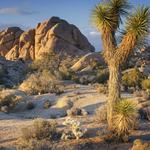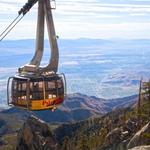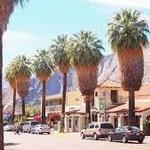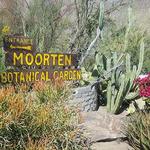Hannah & Benjamin


Things To Do

Joshua Tree National Park
Two distinct desert ecosystems, the Mojave and the Colorado, come together in Joshua Tree National Park. A fascinating variety of plants and animals make their homes in a land sculpted by strong winds and occasional torrents of rain. Dark night skies, a rich cultural history, and surreal geologic features add to the wonder of this vast wilderness in southern California. Come explore for yourself.

Palm Springs Aerial Tramway
The Palm Springs Aerial Tramway—the world’s largest rotating tram car—travels over two-and-one-half miles along the breathtaking cliffs of Chino Canyon, transporting riders to the pristine wilderness of the Mt. San Jacinto State Park. During your approximately ten-minute journey, tram cars rotate slowly, offering picturesque and spectacular vistas of the valley floor below. Once you reach the Mountain Station—elevation 8,516 feet—enjoy two restaurants, observation decks, natural history museum, two documentary theaters, gift shop and over 50 miles of hiking trails.

Palm Springs Air Museum
There is always something new at the Palm Springs Air Museum, where history comes alive and visitors can get close to the vintage World War II and Korea/Vietnam era aircraft. Named in 2014 as one of the top 14 aviation museums in the world by CNN Travel, 59 flyable and static planes are on display inside four climate-controlled hangars totaling 86,000 square feet inside with more outside on the tarmac.

Salton Sea
The Salton Sea is one of those really unique parts of California history that has changed a lot in the last century. Formerly a destination location for Hollywood’s elite to play at, now this park is a much more desolate and somewhat smelly place that gets a lot fewer visitors. In that, however, there is a charm that makes it worth the visit, even if just for the unique art communities that thrive in this brutal desert.



